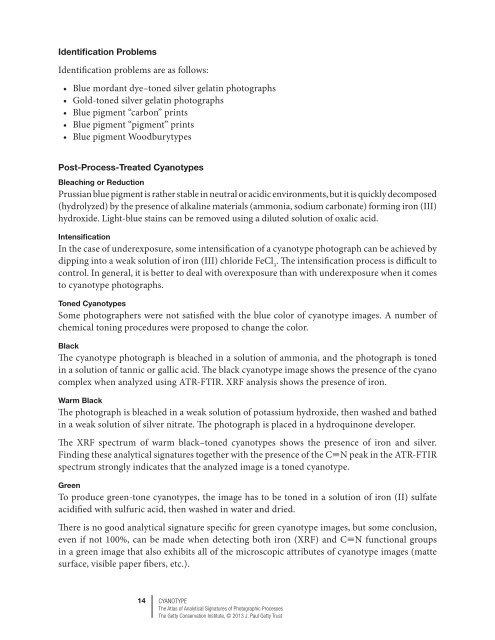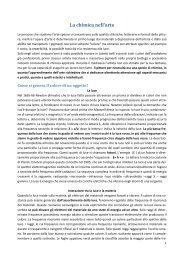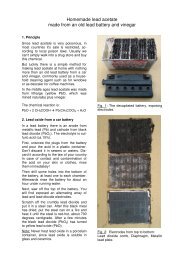CYANOTYPE
Create successful ePaper yourself
Turn your PDF publications into a flip-book with our unique Google optimized e-Paper software.
Identification Problems<br />
Identification problems are as follows:<br />
• Blue mordant dye–toned silver gelatin photographs<br />
• Gold-toned silver gelatin photographs<br />
• Blue pigment “carbon” prints<br />
• Blue pigment “pigment” prints<br />
• Blue pigment Woodburytypes<br />
Post-Process-Treated Cyanotypes<br />
Bleaching or Reduction<br />
Prussian blue pigment is rather stable in neutral or acidic environments, but it is quickly decomposed<br />
(hydrolyzed) by the presence of alkaline materials (ammonia, sodium carbonate) forming iron (III)<br />
hydroxide. Light-blue stains can be removed using a diluted solution of oxalic acid.<br />
Intensification<br />
In the case of underexposure, some intensification of a cyanotype photograph can be achieved by<br />
dipping into a weak solution of iron (III) chloride FeCl 3<br />
. The intensification process is difficult to<br />
control. In general, it is better to deal with overexposure than with underexposure when it comes<br />
to cyanotype photographs.<br />
Toned Cyanotypes<br />
Some photographers were not satisfied with the blue color of cyanotype images. A number of<br />
chemical toning procedures were proposed to change the color.<br />
Black<br />
The cyanotype photograph is bleached in a solution of ammonia, and the photograph is toned<br />
in a solution of tannic or gallic acid. The black cyanotype image shows the presence of the cyano<br />
complex when analyzed using ATR-FTIR. XRF analysis shows the presence of iron.<br />
Warm Black<br />
The photograph is bleached in a weak solution of potassium hydroxide, then washed and bathed<br />
in a weak solution of silver nitrate. The photograph is placed in a hydroquinone developer.<br />
The XRF spectrum of warm black–toned cyanotypes shows the presence of iron and silver.<br />
Finding these analytical signatures together with the presence of the C≡N peak in the ATR-FTIR<br />
spectrum strongly indicates that the analyzed image is a toned cyanotype.<br />
Green<br />
To produce green-tone cyanotypes, the image has to be toned in a solution of iron (II) sulfate<br />
acidified with sulfuric acid, then washed in water and dried.<br />
There is no good analytical signature specific for green cyanotype images, but some conclusion,<br />
even if not 100%, can be made when detecting both iron (XRF) and C≡N functional groups<br />
in a green image that also exhibits all of the microscopic attributes of cyanotype images (matte<br />
surface, visible paper fibers, etc.).<br />
14 <strong>CYANOTYPE</strong><br />
The Atlas of Analytical Signatures of Photographic Processes<br />
The Getty Conservation Institute, © 2013 J. Paul Getty Trust





